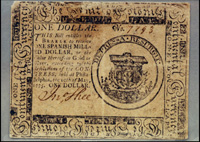Jews in British America

The Jews who settled in the British colonies in America came for much the same reasons as did their Gentile neighbors. Added to the promise of economic opportunity was the lure of religious and social freedom, conditions that were virtually non-existent for them in most of Europe. They relied upon an extensive network of family and friends for mutual aid and economic advancement, and did not hesitate to call on each other for assistance when necessary. Jews secured the right to practice their faith in many places under British dominion in the colonial period but varying degrees of religious toleration kept the number of Jews small in most areas.
Jews had been expelled from England altogether in 1290. Banishment from the British Isles continued until commercial policy after 1651 prompted Oliver Cromwell to entice rich Jews from Amsterdam to London for the benefit of their important trade interests with the Spanish Main. English restrictions on Jewish public worship and proselytizing continued until the 1698 Act for Suppressing Blasphemy made legal the practice of Judaism in England. Considered purveyors of useful capital and permitted to own land after 1723, Jews retained second-class legal status in England until the mid-nineteenth century. By contrast, Jews living in the British colonies more than seven years could be naturalized under the terms of the Plantation Act of 1740.
When congregations formed in America, they derived some benefit from their physical distance from European biases and from their positions as co-builders of a new society, alongside their Gentile neighbors. Settlement began with the 1654 arrival in New Amsterdam (later New York) of 23 Sephardic refugees from Brazil. The governor of New Amsterdam, Peter Stuyvesant, wanted the Dutch West India Company to deport this small group of men, women, and children, but his request was denied, in part because some of the Jewish investors in the company used their influence to prevent it. They established Kahal Kadosh Shearith Israel ("The Holy Congregation the Remnant of Israel"), the first such congregation in the 13 colonies and the only permanent North American Jewish community of the seventeenth century. New York continued to be a center of Jewish life through the eighteenth century. In time, New York's Jews won the right to buy property, hold private religious services, and engage in trade. By the eve of the American Revolution, as many as 400 Jews lived there.
Although Jews arrived in Massachusetts in the seventeenth century, Puritan New England would ultimately prove less attractive than other colonies. In 1654 a group of Jews fleeing the Inquisition in Spain and Portugal were allowed to settle in Newport. The Newport congregation, now called Congregation Jeshuat Israel, is the second oldest Jewish congregation in the United States and meets in Touro Synagogue, the oldest standing synagogue in North America, begun in 1759.
Pennsylvania practiced broad religious tolerance, but its oath of office kept non-Christians from public office throughout the eighteenth century. By the 1730s there were about a hundred practicing Jews in Pennsylvania, most in Philadelphia. The Jewish population swelled to about a thousand during the Revolution. In 1782, the largely refugee community founded Congregation Mikveh Israel and dedicated the city's first synagogue at Cherry Street and Sterling Alley.
There was no established Jewish community in Virginia until after the Revolution, when Jews in Richmond founded Congregation Beth Ahaba in 1789. Moses Myers, who arrived in Norfolk in 1787, was one of a handful of Jews who lived in the city well into the nineteenth century. The only suspected Jewish resident of Williamsburg in the eighteenth century was John de Sequeyra, who was born in London in 1712, studied medicine in Leiden, and became a doctor in 1739. He arrived in Williamsburg about 1745 and practiced medicine in the city until his death in 1795.
Other southern colonies with liberal charters, particularly Georgia and the Carolinas, had significant numbers of Jews. Forty-two immigrants to Savannah established Congregation Mickve Israel in 1733, and Charleston Jews founded Kahal Kadosh Beth Elohim in 1750. Although Virginia's first permanent synagogue community, Kehilah ha Kadosh Beth Shalome, coalesced in Richmond after the Revolution, in 1789, it is considered one of the six colonial Jewish congregations that have persisted to today, along with those in Philadelphia, Newport, Savannah, and Charleston.
Jews fought in the Continental Army and helped finance the American Revolution. In one important endeavor, arms were being funneled into the American colonies by arms merchants running the British blockade primarily from the tiny free trading Island of Dutch St. Eustatius. Jewish merchants and arms traders were a major presence on the island. In February 1780, Admiral Sir George Rodney, commander of the British Fleet noted that "They (the Jews of St. Eustatius, Caribbean Antilles) cannot too soon be taken care of - they are notorious in the cause of America and France."




